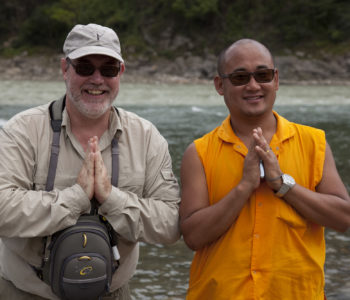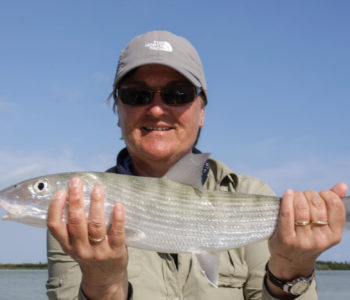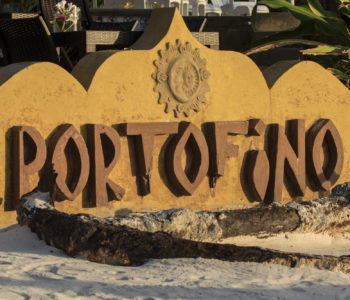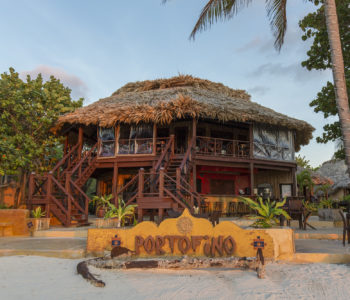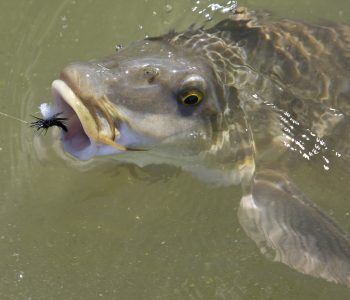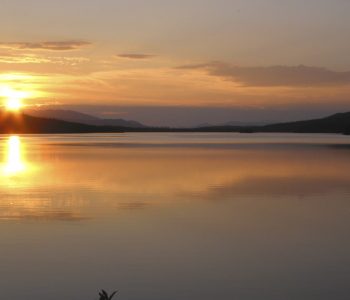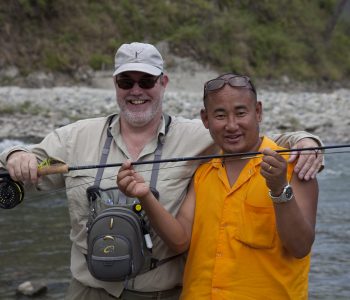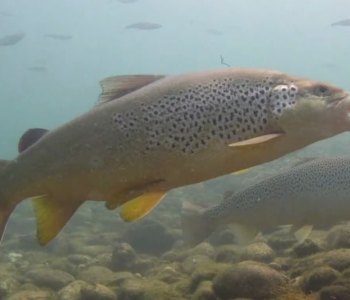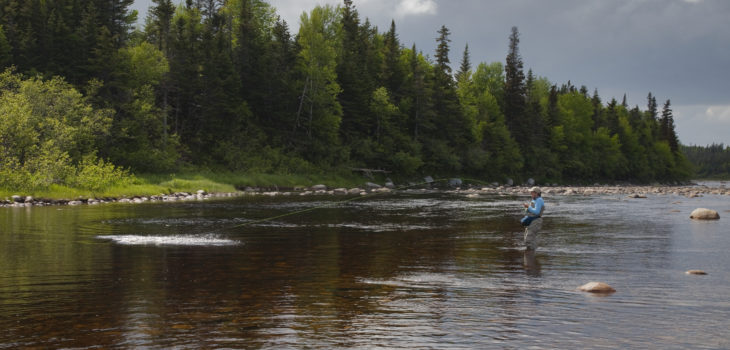
My way with salmon part 1
Text: Hans van Klinken. Photography: Hans van Klinken & Ina Stevens
After nearly 44 years fly fishing for Atlantic salmon I must admit that I did not often write about this wonderful, leaping silver fish or the special flies and techniques that I use to catch them. I wrote a lot about trout and grayling and even more about my personal fishing flies or fishing techniques and most of these stories have been very well received. To be honest, I have no idea why I hardly used the power of the pen to share my salmon secrets with the world. Probably I felt much more confident with all the experiences and skills that I achieved after so many years chasing trout and grayling. Beside that, my special grayling flies were so well received that it was much easier for me to pen some words on them too. I indeed fished a lot for grayling, especially in the eighties and nineties and in those days, fly fishing journalists often described me as a real fanatic grayling junky. But in reality I put in many more hours fishing for Atlantic salmon then for any other species

Ina Stevens playing a very nice salmon that she just hooked on a dry fly

And there she is
Perhaps one reason why I was so shy to share my knowledge of Atlantic salmon was a real bad experience from my early twenties. At that time I was still a greenhorn who enthusiastically wanted to share his stories and experiences about catching salmon and sea trout on dry flies in the most northern part of Norway, and nobody believed me. Dry fly fishing for salmon in the past was not very popular in Europe and a lot of people even called me a liar. Some even laughed out loud and claimed that it was impossible to catch a salmon or sea trout on dry fly, and those words were not spoken by unknown people because a few among them were quite famous. Luckily this nasty experience had an enormous “positive” impact on my fly fishing career because it forced me to isolate myself and continue to do what I was doing and what I believed in, while going my own way completely.
 A run of wild Atlantic salmon. How long they will survive their battle against farming, over fishing and polution?
A run of wild Atlantic salmon. How long they will survive their battle against farming, over fishing and polution?
Let’s talk a little about my salmon fishing history
Being a dry fly purist for Atlantic Salmon was harsh in Europe in the seventies and even early eighties and to me it looked as if I was a complete loner. But today I can proudly say that it was the perfect path for me to follow. The second problem I had was the fact that the rivers I was fishing all were located in the most northern part of Norway and by train that was a very long way. So when my time as a student was over I had to change my fishing locations to the south and middle of Norway. Luckily I always have done very well in life when I have gone my own particular and peculiar ways.
Lastly in 1988, after 17 years using mainly dry flies for Atlantic salmon, I finally got full recognition, when I proved in front of nearly a hundred people, how I hooked and landed 15 salmon in just a few hours with only one particular dry fly, the Klinkhåmer Special! This all happened at the Fosen Peninsula just below the Støvelfossen in the Stordalselva in Afjord on the 7th of July when a few people watched me catching fish after fish and the news spread faster than a wildfire. The people couldn’t believe what I did and when I released most fish as well, it was seen as the action of a lunatic! In those days catch and release was not popular. The largest fish that I landed and safely returned to the river was 87cm (at least 7kg) and I lost an even bigger one that kept me well busy for several minutes. Because a local radio station had announced that something really weird happened below the waterfall more and more people turned up and in no time the whole area was packed with people. The low water had made the river easily accessible and I finally had to stop fishing around 11pm because there were simply too many people walking behind me and I got worried about hooking somebody. The previous few days not many people had been fishing because of the hot temperatures and there were no fish caught for some time. Together with a Finnish guy who caught nine fish using a Bomber, we wrote dry fly history that day. The hot weather and low water conditions were perfect for dry fly fishing and we both were very accustomed to fishing in conditions like these.
On the 14th of July, journalist Terje Dybvik from Fosna-Folket wrote a full page story in the local newspaper about what happened on this particular day and described it as an extra ordinary experience, something that he never ever had seen before. For me it was just one of the dozens of similar experiences I had experienced with dry fly fishing for salmon, sea trout and sea run Arctic char in Norway over so many years.

Synchronised salmon jump
My big change with salmon fishing came in 1988
When I caught my first salmon below the surface in the Bondalselva (also in 1988), I seriously started fishing for salmon with a wet fly more frequently. However, my interest in dry fly fishing for salmon and sea trout had become so intense that I began to hunt for every article and story about Atlantic salmon or sea trout caught on dry flies. My search quickly lead me to fly fishermen and fly tiers who were familiar with fly fishing in Atlantic Canada, New Brunswick, Quebec and even in parts of the State of Maine, USA.
Meanwhile my Klinkhåmer Special had been garnering more international recognition and, as a result, I was more easily able to make new contacts. Being a participant in the international fly tying symposium in New Jersey as one of the European fly tiers in the eighties helped me a great deal too. With further help from great friends like the late Alan Bramley from the UK, and the late master fly tier, Hans P.C de Groot from Holland, I was put in touch with other well known fly tiers and fly fishermen, such as Warren Duncan and Marc Madore from New Brunswick and Al Worthington from New Hope Pa.
Beginning in 1981, Alan Bramley was the owner of the famous hook company Partridge of Redditch and a big sponsor of my workshops and seminars. In 1989, after two years testing my prototypes, he produced the first original Klinkhåmer hook after my own design. It was Alan who put me in touch with his very good friend Warren Duncan. Hans de Groot introduced me to Al Worthington. Slowly, utilizing old fashion snail mail and handwritten letters, I started to build up a really meaningful exchange of correspondence with Al and Warren. It didn’t take long before we were swapping flies, discussing our fishing techniques, and of course sharing our experiences in catching Atlantic salmon on dry flies on both sides from the Atlantic. Al and I have developed a deep personal relationship although we have never had the opportunity to meet one another in person. He imported quality capes and saddles and was the owner of the Hackle Hut. I still have about 40 original letters from him, all written on his Hackle Hut note paper and some envelopes postmarked to me from his fishing residence in Nova Scotia. All are filled with his latest fly fishing information, catch reports and fishing techniques. Sadly, I lost all the letters from Warren during a house renovation several years ago. But I consider myself very fortunate that I still have some of the flies that he specially tied for me to try on my trips to Nova Scotia, New Brunswick and Newfoundland and Labrador. I confess I have never tried them; they simply were too beautiful to fish with, so I copied them and have used the copies instead.
Warren was a great teacher and mentor to me, especially in perfecting my own hairwings. I still marvel at his ability to create tiny little heads and even on bulky hairwing patterns as well. Unfortunately, I only was able to meet Warren once and, for me, he died much too soon. Even today, it remains impossible for me to adequately express my deepest gratitude for what Warren and Al taught me and the information they shared freely with me. It is also with regret that after several years of communication and friendship we slowly lost touch with one other. I allowed my free time to become more limited due to my more time-consuming professional military responsibilities.

What’s more important today a spectacular wildlife event or a crazy cellphone?????
In the footsteps of Lee Wullf
In my eagerness to learn as much as possible about dry fly fishing for salmon, I am most pleased with the personal correspondence I shared with Lee Wulff. We began with very technical correspondence in which we mostly discussed Lee’s dry fly experiences and successes in Newfoundland and mine in Norway. Later, Lee was touched by my story and the fact that only a few people in Europe believed about my catches of sea trout and salmon by dry flies. I think this alone, must have motivated Lee to help me. He sent me a few of his books and video tapes in return for some of my Klinkhåmer flies. I had included a handful of them in my first letter to him. I, for some reason, doubted that he would reply to me. But he did, and he even was willing to share with me some of his fly fishing secrets, which greatly increased my respect for him. I had the pleasure of meeting him once and the last time we corresponded by letter was in early 1990. Thanks to reading his books and watching several of his videos, my excitement to visit Atlantic Canada had grown to a fever pitch! Lee Wulff died on April 28, 1991 near Hancock, New York when the Piper Super Cub he was piloting crashed into trees at the end of the runway during a takeoff. It was a big shock for me but it also pushed me a lot to see the rivers that he loved so much. A few years after Lee’s tragic death I was able to make one of the most exciting fly fishing journeys imaginable. It took me several years of holidays to follow Lee’s footsteps in western Newfoundland and on the great Northern Peninsula.

Show them who’s the boss, even between tricky rocks and you mostly will land them safely
